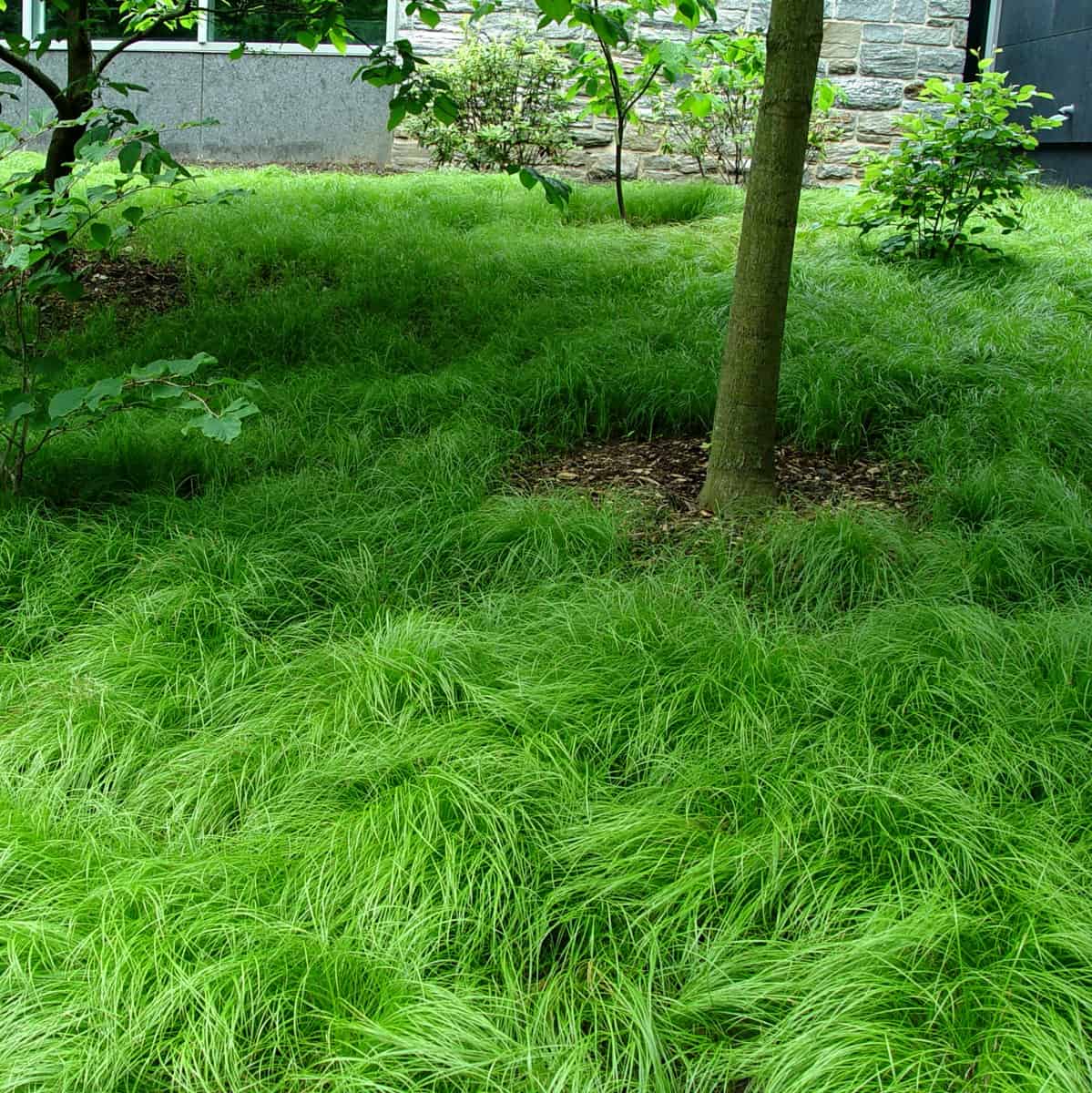Carex Pensylvanica For sale
Carex Pensylvanica is gracefully and naturally in the shady underbrush of North American landscapes is the hardy native grass, Carex Pensylvanica. This resilient native sedge boasts an astonishingly carefree growth habit requiring very little maintenance when situated in low-light, well-drained locations. As a true native, it fits like a glove in local ecosystems and spreads at a natural pace, providing green textured coverage in those trickier shaded spots or underneath showy perennials.
Plant Details - Carex Pensylvanica Specifications
Family: Cyperaceae
Light Requirement: Partial Shade – Full Shade
Water Needs: Low - Moderate
Height: 6-12 in.
Spread: 1-2 ft.
Growth Rate: Moderate
Bloom Time: Spring
Flower Color: Inconspicuous brown/yellow
Wildlife Value: Provides food and shelter for wildlife, provides nesting material for birds, and is a popular larval host
Various critters truly appreciate this plant for its priceless value-adds to the ecosystem. Notably, many butterflies and moths rely on this plant as a dense and safe larval host, helping to proliferate these native species. This grass prefers well-drained soils but can be drought-tolerant once the dense root systems have had a chance to establish. If planting in heavier soils, such as clay, it is a good idea to amend the soil with sand to improve drainage.
Landscape Uses and Maintenance for Pennsylvania Sedge
This grass thrives in shady areas that may have poorer soils, proving itself a fantastic choice for erosion control with a moderately dense root system that stabilizes the soil beneath. The beauty of this native habitat-friendly grass comes from its peaceful movement and texture in a landscape, and is as much of a great aesthetic addition as it is a responsible one.
Because its mature growth height caps at a tidy 12 inches, there is very little need to ever cut back, unlike most grasses, making it an easy alternative to turf.
Noteworthy Traits of Oak Sedge in Native Gardens
The bright blades of Carex pensylvanica stand out immensely in shaded areas, covering the plain with its wistfully clumping green. In the Spring, this grass will push out inconspicuous yet charming flower spikes that blow gently, only adding to the natural lush appeal.
Exposure
Carex pensylvanica (Pennsylvania Sedge) thrives best in part shade to full shade conditions.
Height at Maturity
Under 12"
Usage
Groundcover
Shipped As
Bare root
Ships
USPS
Planting Zones
5-9


